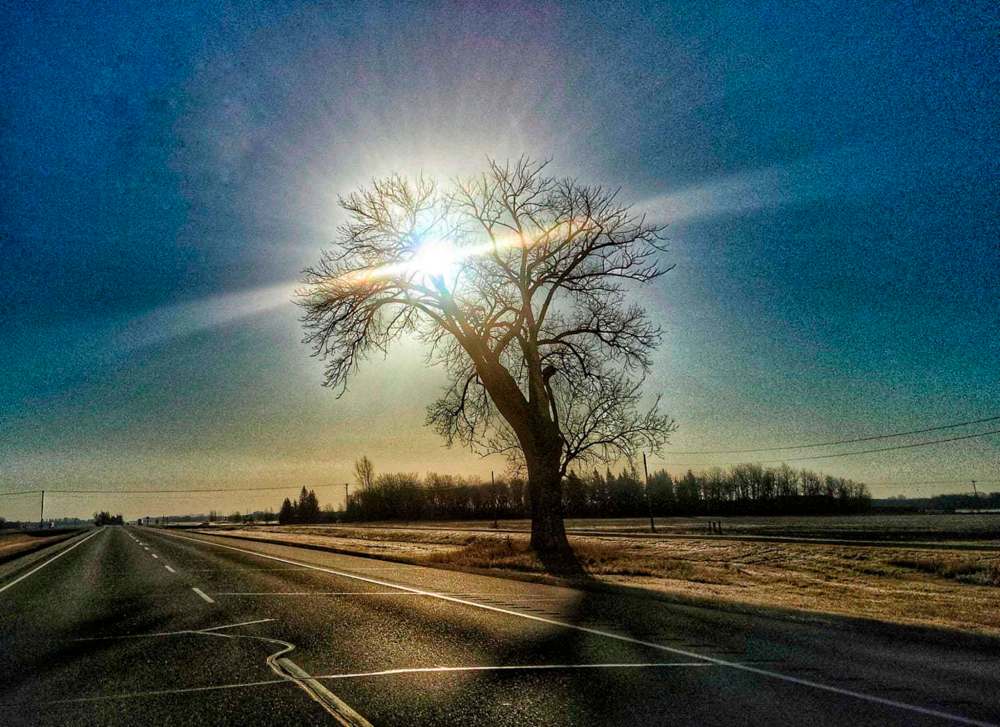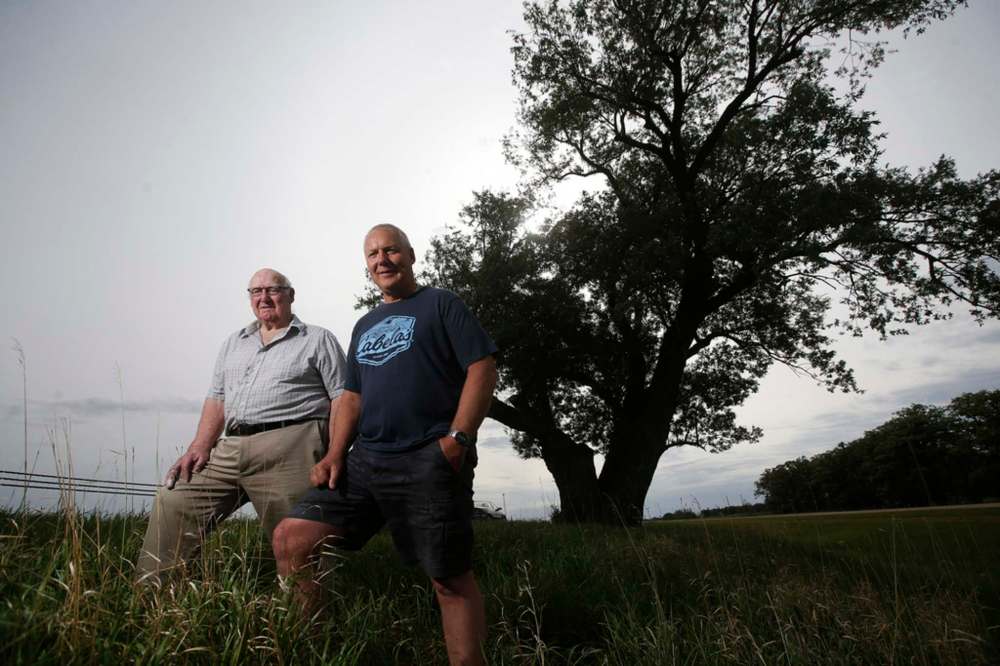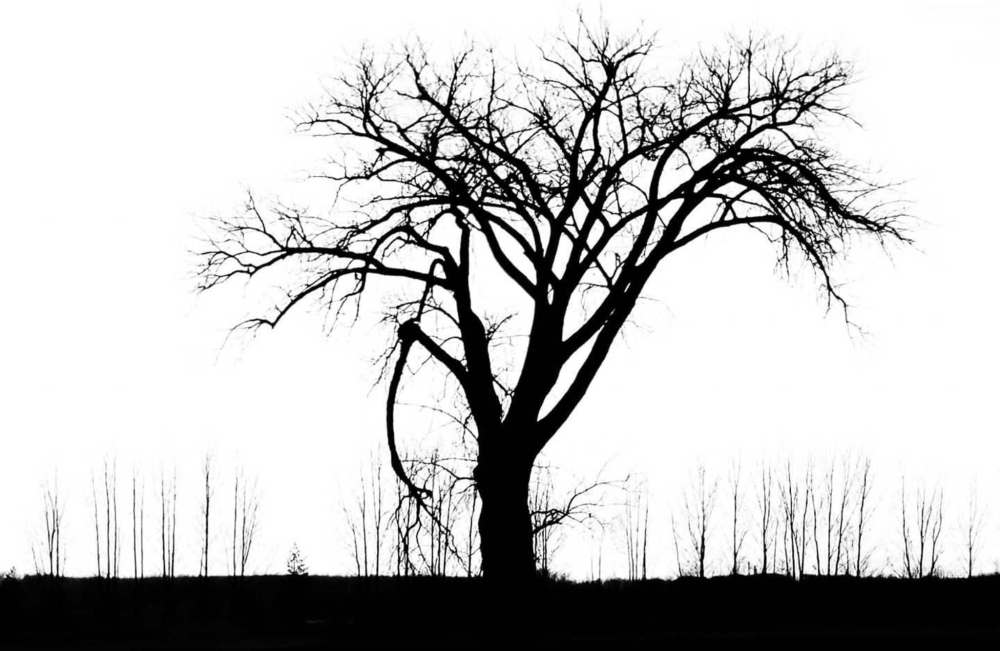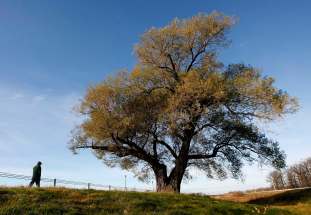Majestic markers 'Halfway trees' have sentimental roots in many Manitobans' hearts
Read this article for free:
or
Already have an account? Log in here »
To continue reading, please subscribe:
Monthly Digital Subscription
$19 $0 for the first 4 weeks*
- Enjoy unlimited reading on winnipegfreepress.com
- Read the E-Edition, our digital replica newspaper
- Access News Break, our award-winning app
- Play interactive puzzles
*No charge for four weeks then billed as $19 plus GST every four weeks. Offer only available to new and qualified returning subscribers. Cancel any time.
Read unlimited articles for free today:
or
Already have an account? Log in here »
Hey there, time traveller!
This article was published 08/07/2021 (1266 days ago), so information in it may no longer be current.
As I set off from the Perimeter at the west edge of Winnipeg a few weeks ago, I wondered if we’d even recognize each other. It has, after all, been more than 30 years since a cub reporter for the Brandon Sun last made the weekly trips there and back to Brandon. Trips where the just-over-two-hour straight-shot drive was either a swell of panicky self-pep talks trying to fake my way into a permanent newsroom job or one long exhale that I’d fooled them again.
Somewhere in the high anxiety of those drives, I realized I had company: a magnificent lone tree just off the south, eastbound edge of the divided highway at almost exactly the halfway mark. And not just coming, but also going. Another tree much taller than the other was wide on the opposite side of the Trans-Canada Highway. Sentries, eight or so kilometres apart, marking a stretch that felt like a comfort zone. “It’s going to be OK.” And it was.
● ● ●

Two trees. My trees. But not mine alone. Stories in the Winnipeg Free Press, Brandon Sun, CKY TV, Local Gardener magazine and elsewhere as well as hundreds of posts on Facebook attest to the power of the trees to inspire photos, poems, paintings, a T-shirt and mug, at least one engagement and a song, the lyrics of which confess: “When we came upon that tree, it somehow spoke to me.”
“I have no idea. Social media?” Bob Archer, 71, offers, laughing, from St. Albert, Alta. “I’m hoping that it does something for people to see it. But can a single tree in the middle of the bald-ass prairie really create any emotional connection to it? Hard to say.”
But the tree, called the South Tree by the Manitoba Historical Society’s Halfway Tree page, “does have a lot of meaning to this family. There’s no doubt about that,” Archer says.
He was about six or seven when he recalls understanding the story of his tree: that his grandfather, Fred Archer, planted two cottonwoods “in respect of his wife, who passed during childbirth, and the child who later died.”

He recounts this evenly, from habit, adding the facts: planted in 1919 at the edge of the bare trail that would become the Trans-Canada Highway, on what was then their property, a little west of Portage la Prairie.
“When I tell the story about the physical tree itself, yeah, I’m happy. It’s nice, it’s good, but to go and sit and visit at the tree? It changes. It’s not a joyful experience at all. It’s more of a ‘What on earth happened here?’”
Archer recalls, as a teenager, his family gathering at the tree after his grandfather’s funeral, a tradition he’s continued with annual visits since leaving Manitoba.
“When most people think of past loved ones, going to the gravesite, going to a cemetery, whatever it might be, that’s just one stop for me, for us, because the more important one is that darn tree. It really is. I feel more in touch with Grandpa when I’m at that tree than I do sitting in front of his marker in the cemetery.”

He doesn’t know exactly when the second tree died, leaving the lone survivor. Nor when the giant hanging branch broke or what caused the other damage apparent on the tree. But he said he loves that the tree has a life beyond his family story. “I like all of it. Love it. I think it’s great.”
Winnipeg-area social worker and musician Kim Reimer first knew the tree from her parents on childhood trips to visit grandparents.
“I know it’s not quite the halfway tree between Rapid City and Steinbach, but whenever we would ask “How much longer,” there would never be a time estimate given. It would always be ‘Well, where is the halfway tree? Have you seen the halfway tree? How long ago was it that we passed the halfway tree? And then us having to calculate it based on how long it had been since we’d seen it.”
It wasn’t until she’d seen posts on the Halfway Tree Fan Club, a page with 1,417 members created on Facebook in 2007, that she too realized it was not just her tree.
“This tree is a significant memory or holds a significant place in their hearts so I thought, ‘Oh I should write a song about that.’”
Now frequently posted and reposted by fan club members, the Half Way Tree song is one of her most popular recordings. “I’m so glad it has resonated with people,” says Reimer, adding she now uses the tree to mark highway driving time with her own children.
Mandi Grayston, who lives in Brandon and commutes regularly to her hometown of Winnipeg, fell in love through the lens of her camera, taking a photo at every passing and posting a generous number to the Facebook page.
Reading the Archer story five or so years ago deepened her appreciation.
“Especially as I’ve learned of the history of the tree on that Facebook page and you’re meeting members of the Archer family,” she says. “It’s become a bit of an obsession.”
● ● ●

Across the way from the Archer family’s South Tree and eight kilometres closer to Portage is the North Tree. The planting date is less firm, having been cited by Local Gardener magazine in 2005 as 1872.
“I would question that, but it was back in that era,” says Donald Coubrough, who will be 87 in July. The other facts are firm. His grandfather, Walter Smith, planted two willows at the end of their property.
“According to my mother, who was born in 1902,” Coubrough recalls from his home in Portage la Prairie, “she only remembered one, so apparently [the other] didn’t live very long.”
Asked if the family is still farming the land, Coubrough is briefly overwhelmed with emotion, saying his son has sold most of the land.
But he rallies recounting the fights to save the tree, following in the footsteps of his father, Malcolm Coubrough, who told the Brandon Sun he successfully dissuaded several removal attempts by highway and Manitoba Hydro crews.
“My folks were away at that time and Manitoba Hydro came in, chainsaws in hand,” Donald recalls of his own efforts. “I did a lot of pleading, though I was only a teenager at that time … They sat there and they sat there and they finally came in and they said, ‘If you keep that tree trimmed and away from the hydro lines, we’ll leave it. I said OK. … There’s been instances like that all my life.”
“My folks were away at that time and Manitoba Hydro came in, chainsaws in hand. I did a lot of pleading, though I was only a teenager at that time … They sat there and they sat there and they finally came in and they said, ‘If you keep that tree trimmed and away from the hydro lines, we’ll leave it. I said OK. … There’s been instances like that all my life.” – Donald Coubrough
He also recalls the tree’s near miss in 2000: A truck driver went off the road, crashing between a guardrail and the tree’s trunk, suffering minor injuries but leaving his passenger wife with two broken legs.
The Smith-Coubrough or North Tree, 11 metres high at the time, has a page in the Manitoba Forestry Association’s 1987 book Heritage Trees of Manitoba.
“I’m proud of it, very very proud,” says Coubrough. “I remember when they came through with the No. 1. People from as far away as Nova Scotia came into our yard pleading that they wouldn’t take the tree down. That’s how important that tree was. So it’s very important to me. The public’s feeling of it.”
But, more crucially, “It is a sign of where our family originated from.”
Drew Caldwell, former Brandon city councillor and Manitoba MLA and cabinet minister, nominated both the north and south trees for the book. Only the Smith-Coubrough willow made it into the book. He favours the Archer cottonwood, for the height that makes it visible for miles, but says he loves them both.
“They’re living landmarks, which I think is particularly poignant. For those of us who travel back and forth to Winnipeg on a regular basis, these trees are part of our family.” – Drew Caldwell
“These trees are friends of mine. And I see them constantly and I always look forward to seeing them,” he says. “They’re living landmarks, which I think is particularly poignant. For those of us who travel back and forth to Winnipeg on a regular basis, these trees are part of our family.”
Another former politician, former Manitoba MP Dorothy Dobbie, would be hard pressed to pick a favourite. She’s dedicated much of her life to trees via Tree Canada. As head of Pegasus Publications, she counts the 2005 story about the Smith-Coubrough willow as the most popular on the Local Gardener website.
“People are very attached to trees I think because they represent history, being in touch with the past, a link to what went before, a really tangible one that we can touch and feel and see. And it strikes our imagination. We start to think, ‘Wow, you know, my grandmother was under that tree.’”
Ken Fosty, arborist with Tree Canada, points out that it’s an “ironic blessing that they are lonely trees, all to themselves, but they’re isolated from insects and diseases.”
He’s not, however, just a scientific fan: “They’re so unique and they’re so big. When you drive across the prairies and you don’t see any trees and then all of a sudden, ‘OMG, look at that monster!’ Just the size says it all.”
***

Both Coubrough and Archer are aware of each other’s trees. Most halfway-tree stories mention only one or the other, although the Manitoba Historical Society hedges: “Local opinions differ on the true identity of the Half-Way Tree.”
Asked if he feels any competition, Archer replies, “I know the one you’re talking about, but no. … It has meaning and it’s special to somebody, but it was never a part of what I grew up with.”
Coubrough returns the generous view and recalls a TV report that focused on the “other” tree.
“I get a phone call from a girl from the neighbourhood that I’ve known since we were teenagers, madder than hell that CKY [said] that this other tree was the halfway tree. ‘No way,’ she says. ‘You phone them!’” he says, chuckling. “She was mad. Why? She had no reason to be other than the pride of the halfway tree.”
As for me, taking a drive down the memory lane of the Trans-Canada, I cleared Portage la Prairie on a blazing spring afternoon and just as I began fearing I’d missed it, my heart skipped a beat even before my eye spotted the willow reaching toward the highway over the guard rail.
A little further on, my adrenaline spiked again at the sight of the taller cottonwood to my left, 99.4 kilometres from the Perimeter.
I stopped at both trees, but remembered to take a moment in the spotty shade of the Archer cottonwood — a moment that was exploded by the shriek of a red-wing black bird sitting in the scrappy crown. Still, apparently, not just my tree.
d2calm@gmail.com








